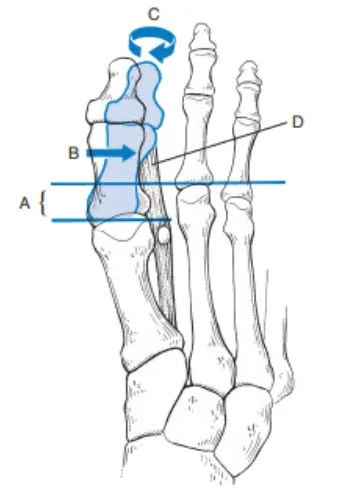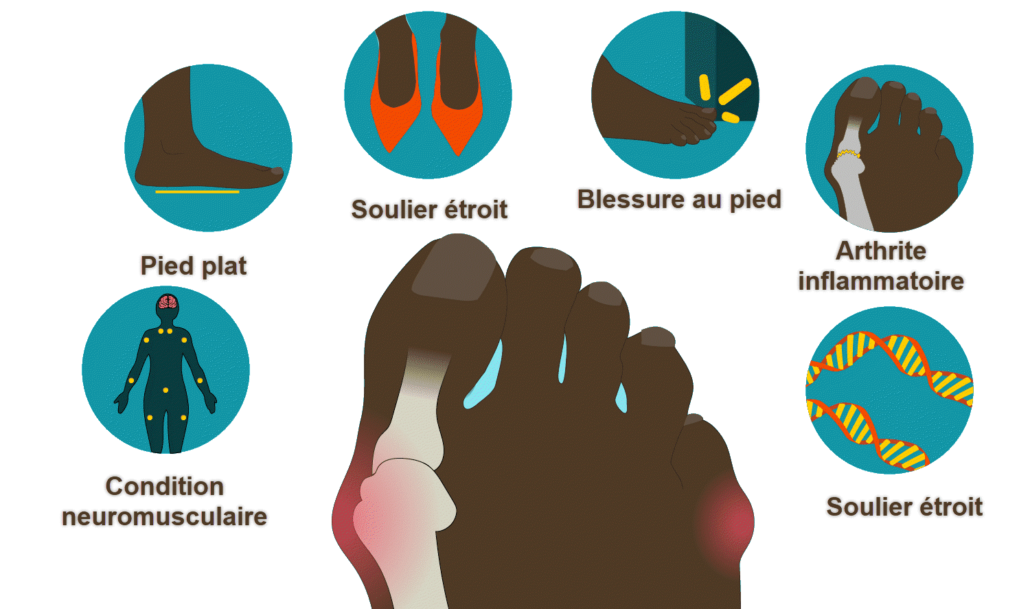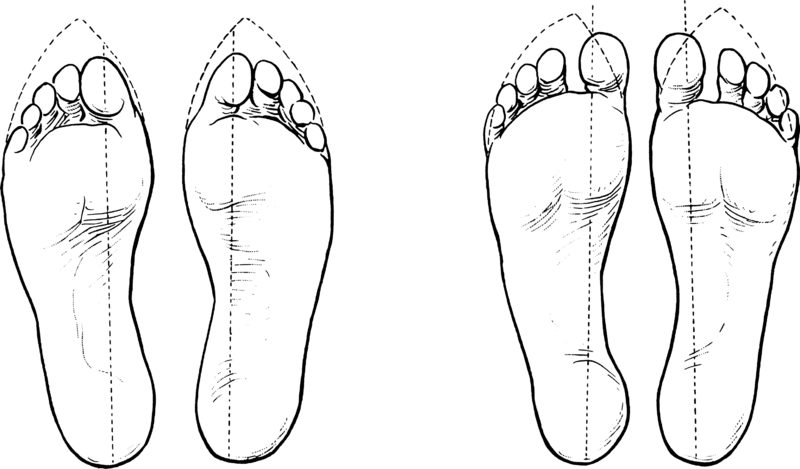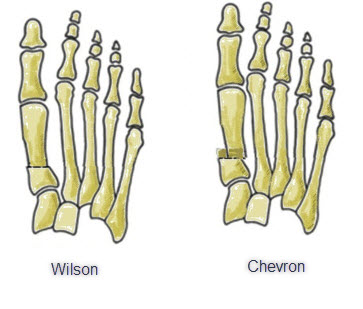Introduction
What is a Bunion?
A bunion, medically known as hallux valgus, is a bony bump that forms on the joint at the base of the big toe. This deformity occurs when the bones of the big toe move out of place, causing the tip of the big toe to be pulled toward the smaller toes and forcing the joint at the base of the big toe to stick out. Over time, this misalignment can lead to pain, swelling, and restricted movement.
Prevalence and Impact
Bunions are a common foot condition, affecting millions of people worldwide. They are more prevalent in women than men, largely due to footwear choices that squeeze the toes together. Bunions can develop at any age, but they are most commonly seen in adults. The impact of bunions extends beyond physical discomfort; they can affect an individual’s mobility, daily activities, and overall quality of life. Severe cases may require surgical intervention to correct the deformity and alleviate pain.
How a Bunion (Hallux Valgus) is Formed
Hallux valgus, commonly known as a bunion, is a deformity of the big toe characterized by a lateral deviation of the metatarsophalangeal (MTP) joint, often accompanied by a painful protrusion of bone at the base of the big toe. The development of this condition involves a complex interplay of genetic, biomechanical, and environmental factors. Here is a detailed description of these stages, including biomechanical influences:
Initial Deviation:
- The deformation often begins with a slight lateral deviation of the big toe at the metatarsophalangeal joint. This initial deviation can be subtle but marks the beginning of the hallux valgus formation.
Ligamentous Instability:
- Ligaments around the MTP joint may become unstable, losing their ability to maintain the normal alignment of the toe. This instability further contributes to the misalignment.
Genetic Factors:
- Genetic predisposition plays a significant role in the development of hallux valgus. Individuals with a family history of bunions are more likely to develop this condition.
Excessive Pronation:
- Biomechanical factors such as excessive pronation (the inward rolling of the foot) can exacerbate the lateral deviation of the big toe, leading to increased stress on the MTP joint.
Wearing Inappropriate Shoes:
- Frequent use of narrow, pointed, or high-heeled shoes places excessive pressure on the forefoot, particularly the big toe, accelerating the progression of the deviation.
Abductor Tendon Displacement:
- The abductor hallucis tendon, which helps stabilize the big toe, may shift laterally due to the altered mechanics of the foot. This displacement further exacerbates the deformity.
Formation of a Bump (Exostosis):
- As the toe deviates, the body may respond by forming a bony bump, known as exostosis, at the base of the big toe. This bump becomes prominent and can cause significant discomfort.
Displacement of the Metatarsal Head:
- The head of the first metatarsal bone begins to shift towards the inner side of the foot, further increasing the lateral deviation of the big toe and worsening the overall deformity.
Inflammation and Pain:
- The misalignment can lead to inflammation of the surrounding tissues, causing pain and discomfort, especially during activities like walking or wearing tight shoes. The bunion may also become swollen and tender to the touch.
Progressive Deformation:
- Without intervention, hallux valgus tends to worsen over time. The lateral deviation of the big toe gradually increases, leading to more pronounced symptoms and potentially necessitating corrective measures, such as orthotics or surgery.
Biomechanics of Hallux Valgus
The biomechanics of hallux valgus are closely related to anatomical changes associated with this deformity of the big toe and the first metatarsophalangeal joint. Foot biomechanics are complex, involving precise coordination among muscles, ligaments, tendons, and joints. When hallux valgus develops, it can lead to significant alterations in foot biomechanics. Here are some key aspects of the biomechanics of hallux valgus:
- Lateral Displacement of the Hallux: The most characteristic feature of hallux valgus is the lateral (valgus) displacement of the big toe. This often results from the lateral deviation of the metatarsophalangeal joint outward, creating an abnormal angle between the first and second metatarsals.
- Instability of the Metatarsophalangeal Joint: Lateral displacement of the hallux can lead to instability of the metatarsophalangeal joint. This instability can influence the distribution of pressure under the foot during walking, contributing to the formation of calluses and corns.
- Effect on the Arch: Hallux valgus can influence the height of the arch. Changes in foot mechanics can lead to a decrease in arch height, affecting weight distribution and foot stability during walking.
- Muscular Imbalances: Imbalance between the muscles on the medial (inner) and lateral (outer) sides of the foot can alter muscular dynamics. Weakened or tense muscles can contribute to the development and progression of hallux valgus.
- Impact on Gait: Individuals with hallux valgus may adopt modified walking patterns to alleviate pain associated with the deformity. These adaptations can result in changes in overall body biomechanics.
- Arthritis: The progression of hallux valgus can eventually lead to arthritis of the metatarsophalangeal joint, which can have significant implications for foot biomechanics and the patient’s quality of life.
Short First Metatarsus: A Contributor to Hallux Valgus
A shorter first metatarsus is a contributing factor to the development of hallux valgus. This condition is characterized by lateral deviation of the big toe. When the first metatarsus is shorter than the second, it creates a hypermobile first ray and widens the first intermetatarsal angle. This combination of anatomical features promotes the formation of a splayed forefoot.
Due to the reduced length of the first metatarsus, the weight supported during the final phase of walking is predominantly borne by the second toe. If a muscular imbalance occurs between the adductor and abductor muscles of the hallux, the big toe may deviate laterally. This phenomenon is accentuated by contractions of the flexors and the long extensor of the toe, acting like a bowstring and pushing the end of the big toe further into adduction.
When this splayed and predisposed forefoot is constrained in pointed high-heeled shoes, additional weight is added. This extra pressure causes accelerated lateral deviation of the first toe. Pointed shoes contribute to increased pressure on the medial aspect of the metatarsophalangeal joint, leading to inflammation and pain, often associated with the formation of a bunion, also known as a tailor’s bunion.

(B) The lateral deviation is accentuated by muscular imbalances, causing the big toe to deviate further laterally.
(C) The use of pointed high-heeled shoes increases pressure on the medial aspect of the metatarsophalangeal joint, exacerbating the lateral deviation and contributing to the formation of a bunion.
Prevalence
- Population: 23% of adults aged 18 to 65 and 35.7% of adults over 65
- Female: 30%
- Men: 13%
- Elderly: 35.7%
Causes of bunion
Here are some possible causes of bunions:
- Heredity: Genetic predisposition may play a role in the development of hallux valgus. If family members have a history of this condition, there may be an increased risk.
- Foot Type: Certain foot types, such as flat feet or feet with excessive pronation, may increase the likelihood of developing hallux valgus.
- Gender: Women are more likely to develop bunions than men. This may be related to factors such as bone structure and shoe choices commonly worn by women.
- Inappropriate Shoes: Regularly wearing narrow, pointed, high-heeled, or poorly fitted shoes can exert excessive pressure on the big toe joint, promoting deviation.
- Rheumatoid Arthritis: Inflammatory conditions such as rheumatoid arthritis can contribute to the formation of hallux valgus by affecting the joints.
- Ligament Laxity: Excessive laxity of the ligaments surrounding the big toe joint can allow for gradual deviation.
- Trauma: Foot injuries, especially around the big toe joint, can contribute to the development of hallux valgus.
- Occupational Activity: Certain professions that require standing for long periods can increase the risk of hallux valgus.

Symptoms

Symptoms of hallux valgus, or bunion, can vary depending on the severity of the deformity. Here are some of the common symptoms associated with this condition:
- Visible Bump: The presence of a bony bump or protrusion on the side of the foot, at the base of the big toe, is one of the characteristic signs of hallux valgus.
- Deviation of the Big Toe: The big toe is deviated towards the second toe, leading to misalignment of the toes.
- Pain: Pain can occur at the big toe joint, especially during walking or when wearing inappropriate shoes.
- Inflammation: Inflammation can develop around the affected joint, causing redness and swelling.
- Joint Stiffness: Some individuals may experience stiffness or difficulty moving the big toe.
- Formation of Corns or Calluses: Due to pressure from shoes, corns or calluses may form on the bump or other parts of the foot.
- Changes in Walking: To avoid pain, a person with hallux valgus may modify their walking, which can lead to other problems in the feet, knees, or back.
Living with Bunions: A Patient’s Perspective
For many individuals, living with bunions is an everyday struggle marked by pain, discomfort, and lifestyle adjustments. Understanding the patient perspective is crucial for comprehending the full impact of this condition beyond the clinical symptoms. Here, we delve into the experiences of those who navigate life with bunions, highlighting the physical, emotional, and social challenges they face.
Physical Pain and Discomfort
The most immediate and noticeable impact of bunions is the physical pain. This pain is often exacerbated by walking, standing for extended periods, or wearing certain types of shoes. Many patients describe the pain as a constant, throbbing ache that intensifies with activity. Swelling and redness around the affected joint are common, further contributing to discomfort. The deformity can also lead to the development of calluses and corns due to the abnormal pressure distribution on the foot.
Finding comfortable footwear becomes a significant challenge. Narrow or tight shoes, which are common in many professional settings, can aggravate the bunion, making it difficult to adhere to dress codes without experiencing severe pain. Even casual footwear options can become limited, as many standard shoes do not accommodate the altered foot shape.
Emotional and Psychological Impact
The persistent pain and physical limitations caused by bunions can take a toll on a person’s emotional and psychological well-being. Chronic pain can lead to feelings of frustration, helplessness, and even depression. The inability to participate in beloved activities, such as sports, dancing, or long walks, can cause a sense of loss and isolation.
Body image issues also arise, especially for those who feel self-conscious about the appearance of their feet. The visible deformity can make people reluctant to wear open-toed shoes or go barefoot in public settings, leading to a decreased quality of life and social withdrawal.
Social and Lifestyle Adjustments
Bunions necessitate a range of lifestyle adjustments. Simple activities like grocery shopping, attending social events, or playing with children can become daunting tasks due to the pain and limited mobility. Many patients report having to plan their days around their foot pain, often avoiding situations where they might need to stand or walk for long periods.
Socially, the condition can be isolating. Declining invitations for fear of exacerbating the pain or feeling embarrassed about the appearance of their feet is common. This isolation can contribute to a cycle of decreased physical activity, further diminishing overall health and well-being.
Seeking Relief and Treatment
Patients often seek relief through various means, including over-the-counter pain medications, orthotic devices, and changes in footwear. While these measures can provide temporary relief, they often fall short of addressing the underlying issue. For many, the prospect of surgery is daunting but sometimes necessary to achieve long-term relief. The recovery process from bunion surgery can be lengthy and challenging, but successful outcomes can significantly improve a patient’s quality of life.
Bunions Risk Factors
Several risk factors can contribute to the development of hallux valgus (bunion). These factors can vary from person to person, and often a combination of these elements can lead to the formation of this deformity. The main risk factors include:
- Genetics: Genetic predisposition may play a role in the development of hallux valgus. If family members have a history of this condition, there may be an increased risk.
- Gender: Women are more likely to develop bunions than men. This can be attributed to differences in foot structure, shoe choices, and hormonal fluctuations.
- Age: The risk of hallux valgus increases with age. Foot deformities can develop and worsen over time.
- Foot Type: Certain foot types, such as flat feet, wide feet, or feet with excessive pronation, may be associated with an increased risk of hallux valgus.
- Inappropriate Shoes: Frequent wearing of narrow, pointed, high-heeled, or ill-fitting shoes can exert excessive pressure on the big toe joint, contributing to the formation of a bunion.
- Occupational Activity: Some professions or activities that require standing for long periods can increase the risk of hallux valgus.
- Inflammatory diseases: Conditions such as rheumatoid arthritis, which involve inflammation of the joints, can increase the risk of developing a foot deformity.
- Ligament Laxity: Excessive ligament laxity can promote deviation of the big toe joint.
It’s important to note that the presence of these risk factors does not necessarily lead to the development of hallux valgus, but they may contribute to its formation.
Differential Diagnosis of Hallux Valgus
- Rheumatoid Arthritis: Joint inflammation, as seen in rheumatoid arthritis, can cause joint pain, deformities, and stiffness, including in the big toe joint.
- Gout: Gout is a form of arthritis characterized by deposits of uric acid crystals in the joints, causing pain and swelling.
- Bursitis: Inflammation of the synovial bursa near the big toe joint can cause pain and swelling similar to those observed with hallux valgus.
- Morton’s Neuroma: Thickening of a nerve between the toes can cause pain and numbness, often confused with symptoms of hallux valgus.
- Lumbar Disc Herniation: Spinal issues, such as disc herniation, can cause intense pain and swelling in the foot, which may be confused with hallux valgus symptoms.
- Foot Fracture: Fracture of the foot bone can cause intense pain and swelling, potentially confused with hallux valgus symptoms.
- Tarsal Tunnel Syndrome: Compression of the posterior tibial nerve can cause pain in the plantar arch, resembling symptoms of hallux valgus
Shoe selection advice for those with hallux valgus
- Wide Toe Box: Opt for shoes with a wide toe box that allows your toes to move freely without being compressed, reducing pressure on the big toe joint.
- D-Shaped Toe: Look for shoes with a D-shaped toe rather than a pointed one. Shoes with a narrow toe can worsen hallux valgus by compressing the toes.
- Low Heels: Prefer shoes with low heels to reduce pressure on the front of the foot. High heels can accentuate the deviation of the big toe.
- Removable Insoles: If possible, choose shoes with removable insoles. This allows for adjustments to accommodate custom orthotics if needed.
- Flexible Materials: Opt for shoes made with soft and flexible materials that adapt to the shape of the foot, reducing friction and irritation.
- Arch Support: A mild arch support can help stabilize the foot. However, it is essential that the support is not too pronounced to avoid creating additional pressure on the front of the foot.
- Adjustable Closures: Choose shoes with adjustable closures, such as laces or straps, to allow for a personalized fit.
- Try Shoes in the Evening: Try on shoes in the evening when feet are often slightly swollen, giving you a better idea of comfort throughout the day.
- Try with Orthotics: If you use orthotics, make sure to try shoes with them to ensure a comfortable fit.
- Avoid Narrow or High-Heeled Shoes: Avoid narrow, pointed, high-heeled shoes, or shoes with a shape that exerts excessive pressure on the front of the foot.
Each person is unique, and it’s essential to find shoes that provide comfort and support for individual needs.
Hallux Valgus Treatment
Non-chirurgical
- Shoe Modification: Wide and low-heeled shoes.
- Orthotics: Improves alignment and support.
- Pain Relievers: Acetaminophen.
- Ice: Apply ice to the inflamed deformity to reduce inflammation.
- Bunion Pads: Prevents irritation of the HV deformity.
- Stretching: Helps maintain mobility of the affected joint.
Bunions become painful if allowed to progress. But not all bunions necessarily progress. Many bunion problems can be treated without surgery. Generally, bunions that are not painful do not require surgical correction. For this reason, orthopedic surgeons do not recommend “preventative” surgery for bunions that are not painful; with proper preventive care, they may never become a problem.
Surgical
Osteotomy
Osteotomy for the treatment of hallux valgus (bunion) is a surgical procedure that involves cutting and reorienting the bones of the metatarsophalangeal (MTP) joint at the base of the big toe. The goal of osteotomy is to correct the deviation of the big toe, realign the joint, and improve foot function.
Here are some key points about hallux osteotomy:
- Indications: Osteotomy is usually considered to treat hallux valgus when non-surgical measures, such as wearing appropriate shoes, using orthotics and physiotherapy, fail to relieve symptoms and correct the deformity in a satisfying manner.
- Surgical techniques: There are different osteotomy techniques for hallux valgus, and the choice depends on the severity of the deformity and the specific characteristics of the foot. Procedures may involve cutting and reorienting the metatarsal bone (proximal osteotomy) or the phalangeal bone (distal osteotomy).
- Angle correction: Osteotomy reduces the intermetatarsal (IM) angle, thereby correcting the inward deviation of the big toe.
- Fixation: Once osteotomy is performed, bones can be fixed in place using screws, plates, or other fixation devices to allow proper healing.
- Recovery: The recovery period after hallux osteotomy varies depending on the specific procedure. Patients may require a temporary period of immobilization, followed by rehabilitation to restore foot mobility and strength.
- Risks and Complications: Like any surgical intervention, hallux arthroplasty carries potential risks and complications, including infection, healing problems, and potential loss of mobility or sensitivity.
- Post-operative Aftermath: Patients are often encouraged to avoid putting weight on the operated foot during the initial recovery period. Special shoes or adapted footwear may be recommended to support healing.

Arthroplasty
Arthroplasty is a surgical procedure aimed at repairing or replacing a damaged joint. When it comes to hallux valgus (bunion), arthroplasty may involve the repair or replacement of the metatarsophalangeal joint (MTP), which is the joint at the base of the big toe. This procedure is also known as hallux arthroplasty.
Here are some points to consider regarding hallux arthroplasty:
- Objective: The primary goal of hallux arthroplasty is to correct the deviation of the big toe and reduce the associated pain of hallux valgus. This may also include correcting other structural abnormalities of the joint.
- Surgical Techniques: There are different surgical techniques for hallux arthroplasty, and the choice depends on the severity of the deformity and the specific needs of the patient. Some procedures involve the resection of a portion of the bone to realign the joint, while others may involve fixing the bone with screws or plates.
- Joint Replacement: In some cases, when the joint is severely damaged, joint replacement arthroplasty may be considered. This often involves the use of joint implants to restore joint function.
- Recovery: The recovery period after hallux arthroplasty can vary depending on the specific procedure performed. Patients may require a period of immobilization, followed by rehabilitation to restore foot mobility and strength.
- Risks and Complications: Like any surgical intervention, hallux arthroplasty carries potential risks and complications, including infection, healing problems, and potential loss of mobility or sensitivity.
- Indications: Hallux arthroplasty is generally considered when non-surgical measures, such as wearing appropriate shoes, using orthotics, and other conservative interventions, fail to relieve symptoms and correct the deformity adequately.
It is important to note that each case of hallux valgus is unique, and the decision to opt for arthroplasty will depend on several factors, including the severity of the deformity, the presence of symptoms, and the response to non-surgical treatments. Patients should discuss in detail with their orthopedic surgeon to understand the benefits, risks, and expectations associated with hallux arthroplasty.
Radiographic Signs of Hallux Valgus
The radiographic signs of hallux valgus, or bunion, are assessed using a foot X-ray. These images allow healthcare professionals, such as radiologists, orthopedic surgeons, or podiatrists, to visualize the bone structure and identify specific deformity characteristics. Here are some typical radiographic signs of hallux valgus:
- Intermetatarsal Angle (IM): This is the angle formed between the metatarsal bones of the big toe and the second toe. In hallux valgus, this angle is increased, indicating a deviation of the big toe inward.
- Hallux Valgus Angle (HAV): This angle measures the deviation of the big toe from the longitudinal axis of the foot. A larger hallux valgus angle indicates a more significant deviation of the big toe.
- Displacement of the metatarsal head: X-rays can show if the metatarsal head (the bony end of the big toe) is displaced inward relative to the base of the metatarsal.
- Joint enlargement: X-rays may reveal enlargement of the metatarsophalangeal (MTP) joint, the joint at the base of the big toe, often associated with the formation of a bump.
- Osteophytes: Bony growths called osteophytes can form at the base of the big toe in response to friction and irritation, which can also be seen on x-rays.
Radiographic evaluation allows healthcare professionals to determine the severity of the deformity, develop an appropriate treatment plan, and monitor disease progression over time. Radiographs are often taken with the patient standing to replicate normal loading forces on the foot, which can influence big toe deviation.

References
- Blitz NM, Lee T, Williams K, Barkan H, DiDimenico LA. Early weight bearing after modified lapidus arthodesis: a multicenter review of 80 cases. J Foot Ankle Surg. 2010 Jul-Aug;49(4):357-62. [PubMed]
- Coughlin MJ, Jones CP. Halluxvalgus: demographics, etiology, and radiographic assessment. Foot Ankle Int. 2007 Jul;28(7):759-77. [PubMed]
- Nix S, Smith M, Vicenzino B. Prevalence of hallux valgus in the general population: a systematic review and meta-analysis. J Foot Ankle Res. 2010 Sep 27;3:21. [PMC free article] [PubMed]
- Glasoe WM, Nuckley DJ, Ludewig PM. Hallux valgus and the first metatarsal arch segment: a theoretical biomechanical perspective. Phys Ther. 2010 Jan;90(1):110-20. [PubMed]
- Wülker N, Mittag F. The treatment of hallux valgus. Dtsch Arztebl Int. 2012 Dec;109(49):857-67; quiz 868. [PMC free article] [PubMed]6.Giannini S, Faldini C, Nanni M, Di Martino A, Luciani D, Vannini F. A minimally invasive technique for surgical treatment of hallux valgus: simple, effective, rapid, inexpensive (SERI). Int Orthop. 2013 Sep;37(9):1805-13. [PMC free article] [PubMed
- .Gilheany MF, Landorf KB, Robinson P. Halluxvalgus and hallux rigidus: a comparison of impact on health-related quality of life in patients presenting to foot surgeons in Australia. J Foot Ankle Res. 2008 Dec 11;1(1):14. [PMC free article] [PubMed]
- Krannitz KW, Fong HW, Fallat LM, Kish J. The effect of cigarette smoking on radiographic bone healing after elective foot surgery. J Foot Ankle Surg. 2009 Sep-Oct;48(5):525-7. [PubMed]
- Dux K, Smith N, Rottier FJ. Outcome after metatarsal osteotomy for hallux valgus: a study of postoperative foot function using revised foot function index short form. J Foot Ankle Surg. 2013 Jul-Aug;52(4):422-5. [PubMed]

























